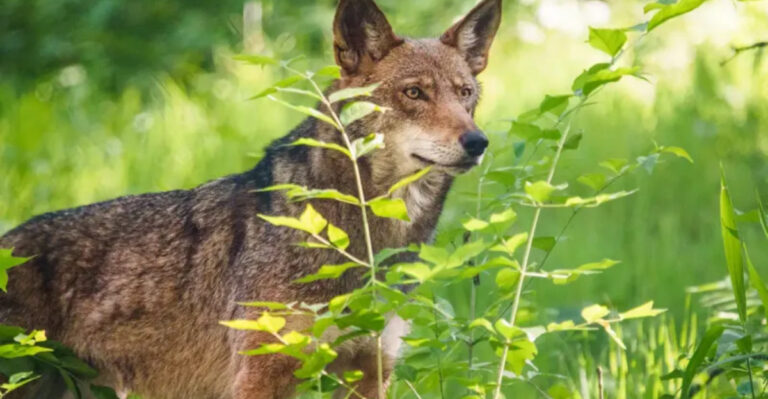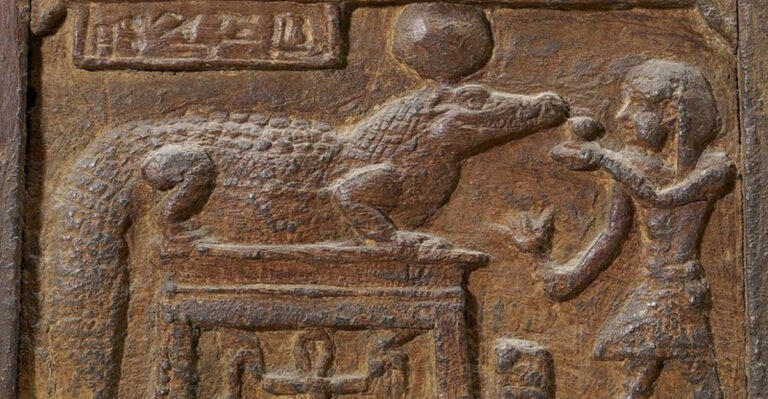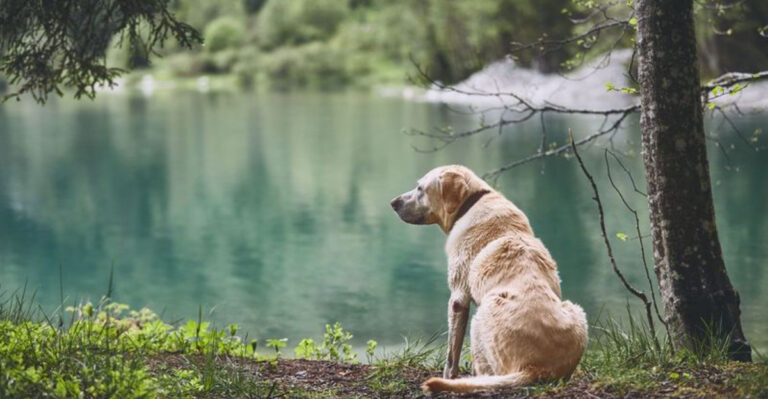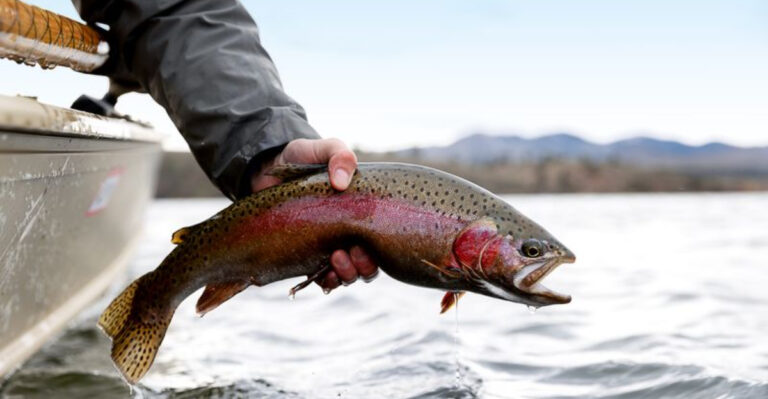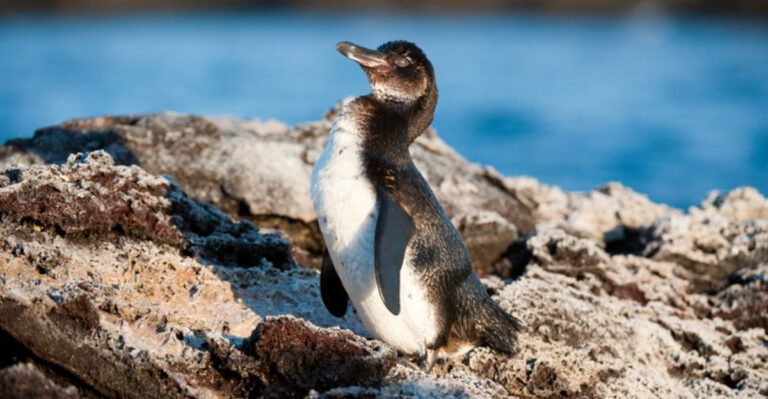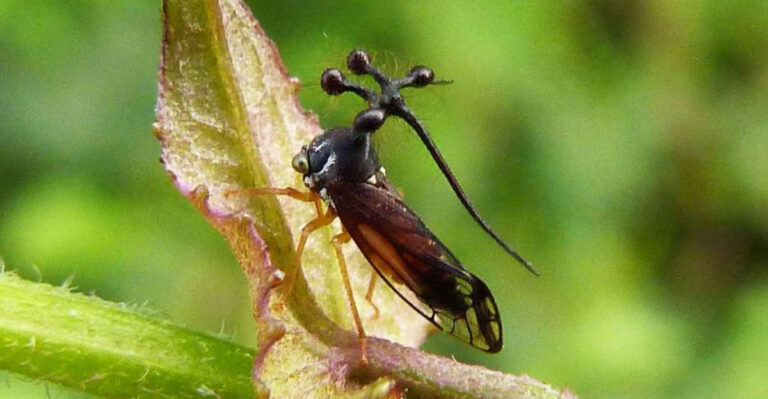Supersized Dinosaur-Eating Crocodiles Evolved Every Time They Had The Chance
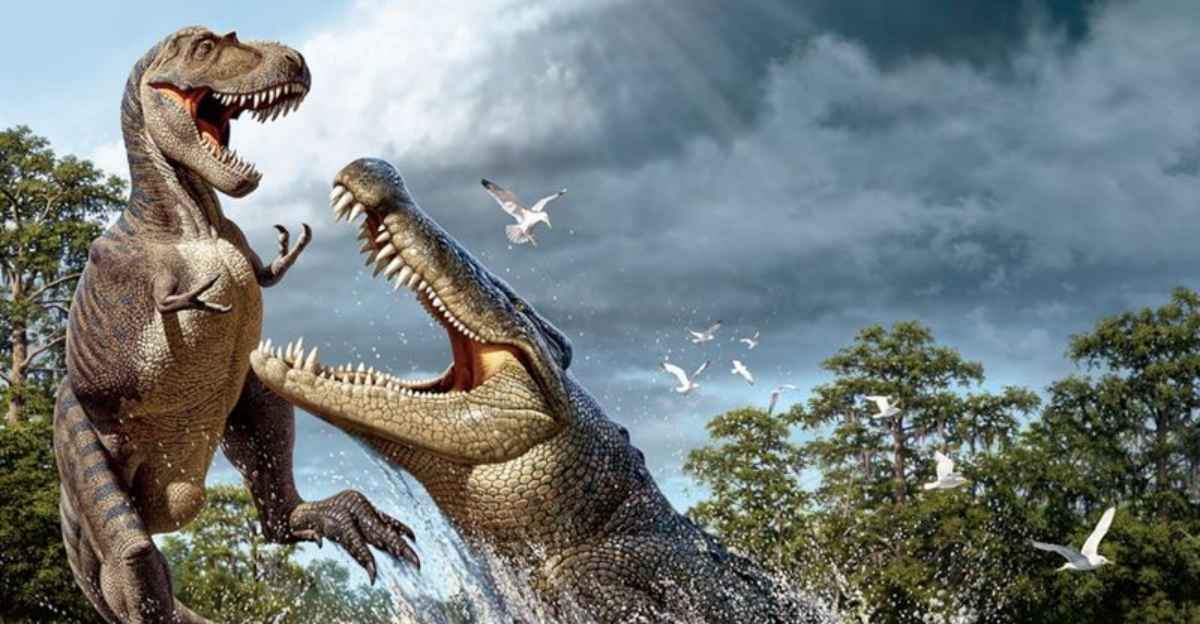
Imagine a crocodile bigger than a car, with teeth the size of bananas, lurking in prehistoric waters. These weren’t just big reptiles – they were apex predators capable of taking down dinosaurs.
Throughout Earth’s history, whenever ecological conditions allowed, these supersized crocodilians evolved again and again, dominating waterways and terrorizing even the mightiest dinosaurs that dared come too close to their watery domains.
In The Late Cretaceous, Even Dinosaurs Feared The Water
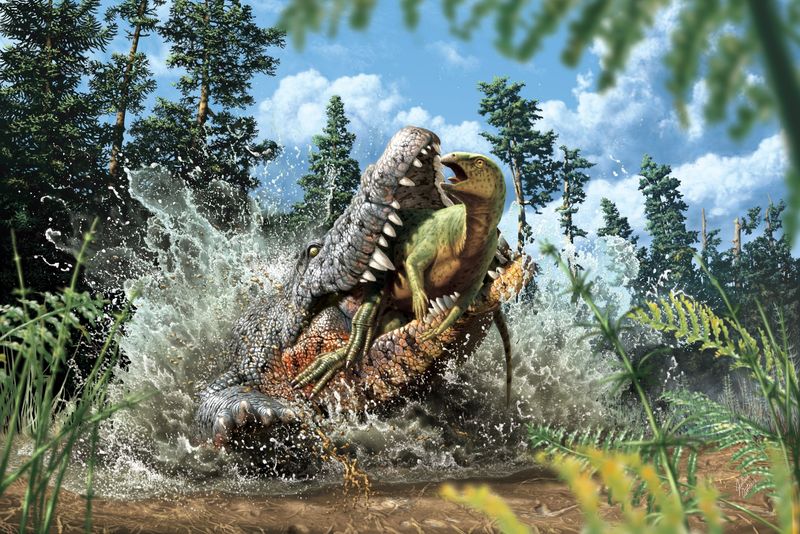
The Late Cretaceous period (100-66 million years ago) wasn’t just the age of T. rex and Triceratops – it was also when massive crocodilians ruled the waterways. For dinosaurs, approaching rivers or lakes meant risking a violent death.
These ancient waters harbored ambush predators that could explode from below with lightning speed and crushing power. Many dinosaur fossils show bite marks matching these giant crocs.
Paleontologists believe these water monsters may have influenced dinosaur behavior, forcing them to develop strategies for safely drinking or crossing waterways. The tables were turned – on land, dinosaurs dominated, but in water, they became prey.
Deinosuchus Was A Giant Crocodile That Lurked In Wetlands
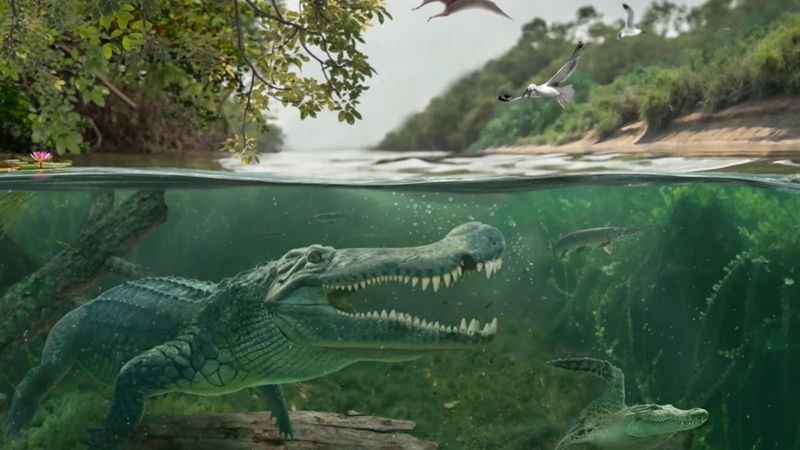
Skulking through the prehistoric swamps of North America, Deinosuchus reached lengths of 33 feet and weighed up to 8.5 tons – larger than most modern buses! These behemoths dominated coastal wetlands approximately 82 to 73 million years ago.
Unlike modern crocodiles that often bask openly, Deinosuchus likely relied more on stealth and ambush. Their massive bodies remained submerged with only eyes and nostrils visible above water.
Fossil evidence shows they had incredibly thick, armored skin covered in bony plates called osteoderms. Their jaws could open wide enough to swallow smaller dinosaurs whole, while their bite force easily crushed bones of larger prey.
Its Name Means ‘Terrible Crocodile’ – And It Earned It
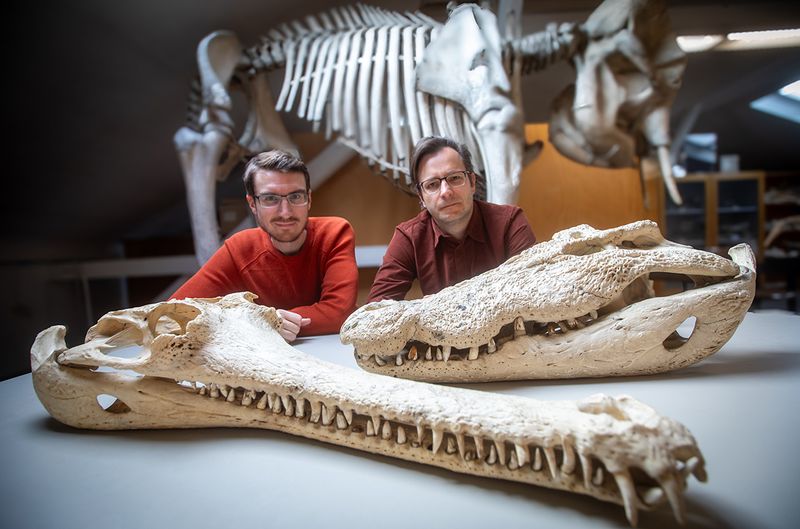
Greek-derived “Deinosuchus” perfectly captures the nightmarish nature of this ancient beast. Scientists didn’t exaggerate when naming this monster – fossil evidence reveals a creature designed for maximum killing efficiency.
Skull analyses show specialized pressure sensors that could detect tiny water vibrations, allowing it to hunt effectively even in complete darkness. Its bite force exceeded 23,000 pounds – strong enough to crush a car today.
Stomach contents preserved in fossils reveal bones from various dinosaurs, turtles, and even other crocodilians. Nothing was safe. Modern crocodiles can go months between meals, and Deinosuchus likely shared this ability, making it an opportunistic killer that could strike after long periods of patient waiting.
These Beasts Grew Nearly 26 Feet Long, With Banana-Sized Teeth
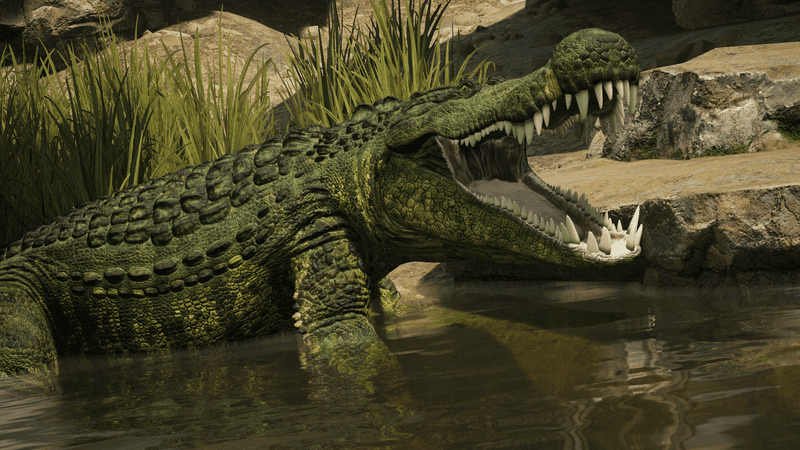
Deinosuchus teeth reached lengths of 6-8 inches – truly banana-sized daggers designed for gripping and crushing prey. Some recovered fossils show teeth marks penetrating dinosaur bones up to two inches deep.
Their enormous bodies required special adaptations. Thicker, stronger limbs supported their massive weight, while specialized vertebrae helped distribute the stress of their size.
Growth ring analysis of fossilized bones suggests these monsters kept growing throughout their lives. Scientists estimate they could live 50-80 years in good conditions. The oldest individuals were the largest, with some specimens potentially reaching lengths of 30+ feet – longer than a school bus!
They Fed On Large Dinosaurs That Came Too Close To The Shore
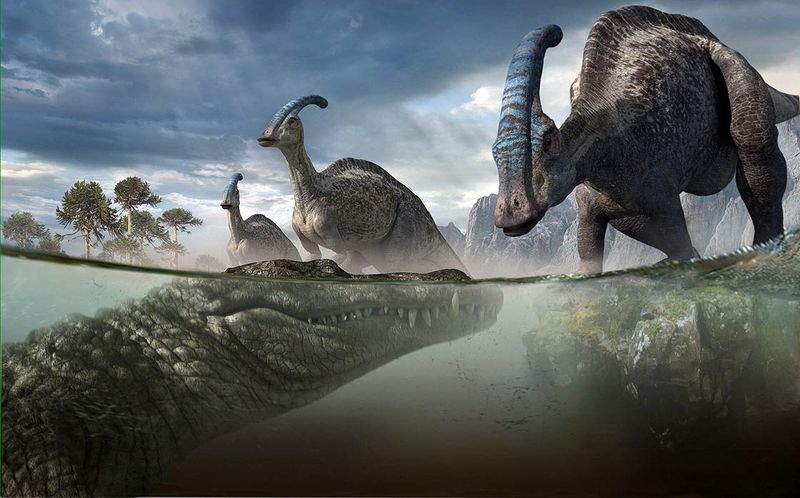
Ambush masters of the highest order, these supersized crocodilians transformed shorelines into death traps. Their hunting strategy relied on explosive bursts of speed from a seemingly still position. One moment a dinosaur would be drinking peacefully, the next – violently dragged underwater.
Fossil evidence tells a gruesome story. Hadrosaur (duck-billed dinosaur) bones bearing distinctive crocodilian bite marks have been discovered throughout their range. One famous specimen shows a Deinosuchus tooth embedded in a dinosaur vertebra that had begun healing – evidence of a failed attack.
Their bite-and-drag technique mirrors modern crocodiles but on a terrifying scale. After capturing prey, they would perform “death rolls” – spinning their massive bodies to tear chunks from victims too large to swallow whole.
Even Tyrannosaurs May Have Fallen Victim To These Ancient Crocs
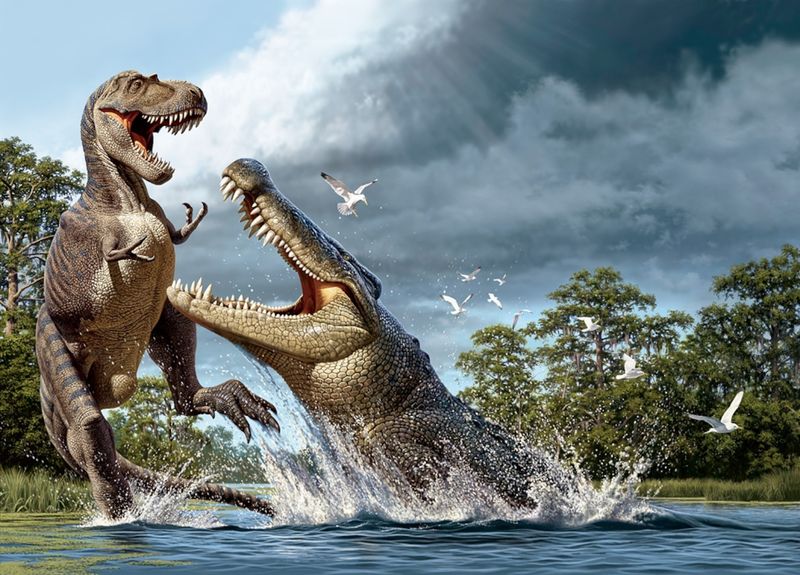
The mighty Tyrannosaurus rex might have ruled the land, but at the water’s edge, it met its match. Fossil evidence suggests even apex predator dinosaurs weren’t safe from Deinosuchus ambushes. Several tyrannosaur fossils show distinctive crocodilian bite marks that match Deinosuchus dental patterns.
Young tyrannosaurs would have been particularly vulnerable. Scientists believe these dinosaurs underwent significant body changes as they matured, with juveniles being more slender and less powerful than adults.
Tyrannosaurs needed to drink, creating perfect ambush opportunities. Modern studies of predator-prey dynamics suggest that even dominant land predators are vulnerable at water sources. For Deinosuchus, a drinking T. rex represented not danger, but dinner – a role reversal that highlights the power of these ancient crocodilians.
Deinosuchus Was Not Closely Related To Modern Alligators
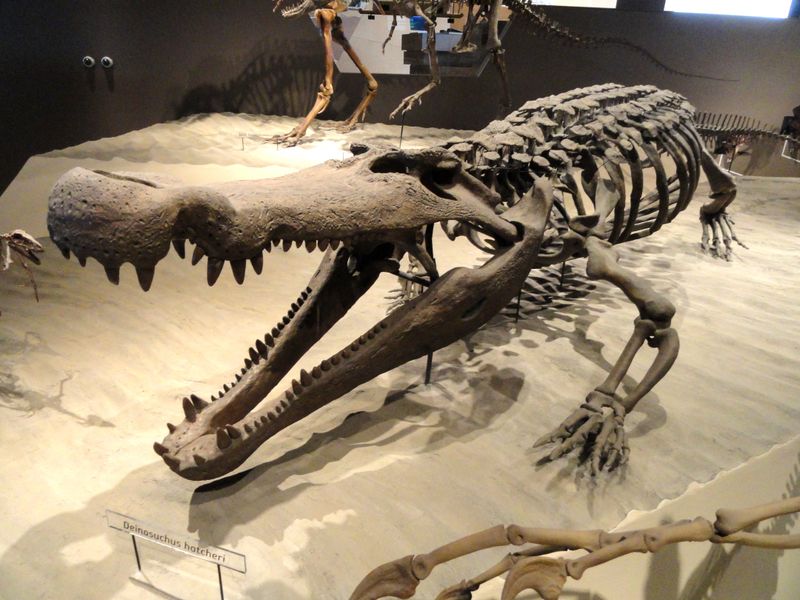
Contrary to popular belief, Deinosuchus wasn’t just a super-sized version of today’s alligators. Genetic and fossil analysis places it in a separate evolutionary branch – more like a cousin than a direct ancestor to modern crocodilians.
Key anatomical differences set it apart. Its skull had unique bulbous projections at the snout tip, possibly housing specialized sensory organs. The tooth arrangement differed significantly from modern species, with specialized crushing molars in the back of its jaws.
Modern crocodilians descended from smaller, more adaptable relatives that survived the mass extinction event 66 million years ago. While Deinosuchus represents an evolutionary dead-end, its basic body plan proved so effective that similar forms have appeared repeatedly throughout history – a case of convergent evolution where different lineages develop similar features independently.
Scientists Say These Giants Evolved Multiple Times Across History
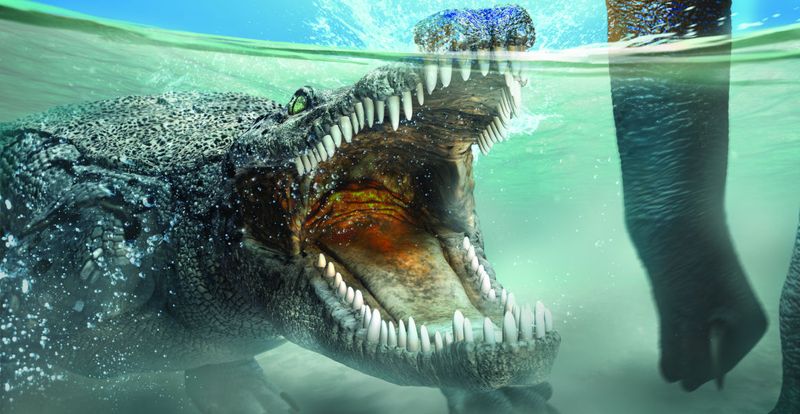
Giant crocodilians represent one of evolution’s favorite experiments. Fossil records reveal at least seven separate lineages that independently evolved massive size at different points in Earth’s history. From Sarcosuchus in the Early Cretaceous to Purussaurus in the Miocene, supersized crocs kept appearing.
This pattern, called convergent evolution, happens when similar environmental pressures create similar adaptations in unrelated species. Each giant crocodilian evolved specialized adaptations for their time period, yet all shared core features: massive jaws, semi-aquatic lifestyles, and apex predator status.
The repeated evolution of these giants suggests their body plan represents a highly successful formula for aquatic predation. When ecological conditions allow large crocodilians to thrive, natural selection seems to push them toward enormous size again and again.
Whenever Conditions Were Right, Supersized Crocodiles Reappeared
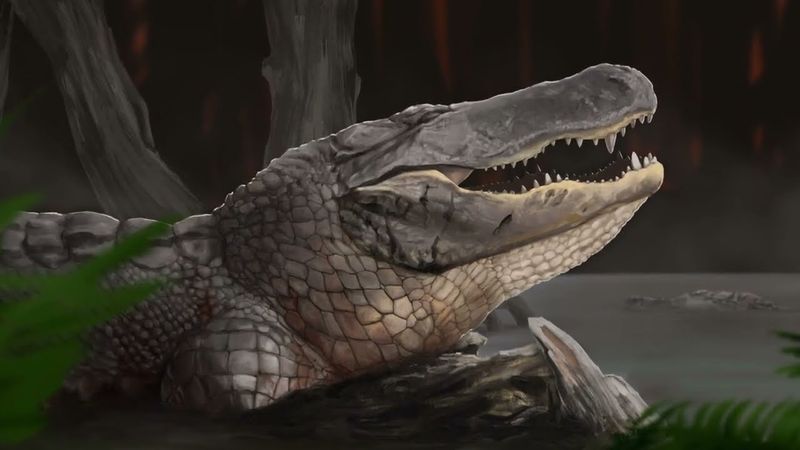
Nature keeps reinventing the giant crocodile formula whenever possible. The key ingredients? Warm climates, abundant large prey, and minimal competition from other apex predators. When these conditions align, crocodilians tend to supersize.
During the Miocene epoch (23-5 million years ago), Purussaurus reached lengths of 41 feet in South American wetlands. Earlier, during the Early Cretaceous, Sarcosuchus patrolled African waterways at lengths of 40 feet. Each evolved independently in separate regions when conditions permitted.
Scientists call this pattern “iterative evolution” – the repeated development of similar adaptations. The crocodilian body plan has remained remarkably unchanged for over 200 million years because it works so effectively. When ecological opportunity allows for gigantism, crocodilians seem predisposed to evolve massive size and dominate their ecosystems.
Deinosuchus Wasn’t Just Big – It Was A Top Predator Of Its Time
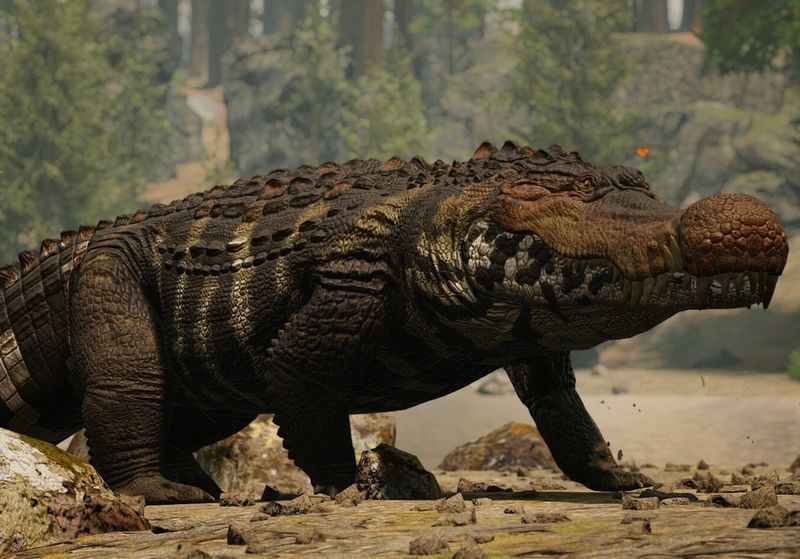
Being enormous wasn’t Deinosuchus’s only claim to fame – it occupied the ecological role of apex predator. Unlike modern crocodilians that often scavenge, Deinosuchus actively hunted the largest animals in its environment, including dinosaurs that outweighed it.
Fossil evidence shows it had among the strongest bite forces of any animal ever measured – estimated at over 23,000 pounds per square inch. For comparison, modern saltwater crocodiles generate about 3,700 psi, while T. rex managed around 8,000 psi.
Its hunting territory likely encompassed both freshwater and coastal marine environments. This versatility allowed it to exploit multiple food sources and survive seasonal changes. Few predators in Earth’s history have combined such massive size, bone-crushing bite force, and habitat flexibility – making Deinosuchus truly one of prehistory’s most formidable hunters.

